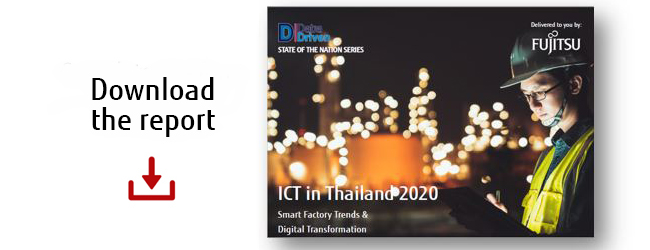
The digital revolution has transformed manufacturing in Thailand and globally. If mass production was the key technology in 20th-century manufacturing, in the 21st century it is mass customization. A range of new technologies such as artificial intelligence, robotics, and 3D printing mean that smart factories can be built and operated at a much lower cost and at a much smaller scale than conventional manufacturing facilities.
Digital transformation in Thai manufacturing
Thai manufacturers are generally well advanced on their digital transformation (DX) journey. More than three quarters (78.4%) of their implementations of DX across the manufacturing process are 'mature with outcomes delivered' or 'well underway'. The most significant DX challenge for Thai manufacturing organizations is procurement of digital technologies and the alignment of existing ICT systems with DX, both rated at ‘somewhat challenging’ or ‘highly challenging’ by every single respondent.
Thai manufacturing organizations mention a range of outcomes from their DX initiatives. Most important is improved efficiency and reduced cost (mentioned by 27.63% of respondents), followed by strengthened competitiveness and transformed business models (both at 17.1%). Three quarters (73.4%) have implemented cybersecurity measures in their manufacturing operations.
Thai manufacturers report significant progress in the implementation of the Internet of Things (IOT) in manufacturing. More than three quarters (78.3%) of respondents have a mature implementation or are well underway. IOT is being widely used for operations, maintenance and workstyle innovation. One quarter (24.3%) have created a manufacturing IOT roadmap or pilot.
Respondents to the survey were asked about their most important digital co-creation partners for smart factory and manufacturing. At the top of the list is the organization’s customers, mentioned by 91.1% of respondents. Government organizations and technology providers are next, with 86.5% each, followed by consulting firms (83.8%) and channel and sales partners (81.1%). Start-up companies are important co-creation partners for 78.4% of respondents.
Overall, Thai manufacturing organisations prefer global providers for their ICT manufacturing requirements. Nearly one third (30.4%) prefer a blend of local, regional and global players, and one quarter (24.8%) prefer a regional player. Only 7.6% prefer a local player.
In general, Thai manufacturing ICT decision makers are 'highly satisfied' or 'very satisfied' or with their manufacturing ICT providers (67.4% of respondents). Another 30.5% are ‘satisfied’ with their providers. They are also generally satisfied with their manufacturing recruitment providers (78.4%) and networking and data center services providers (75.7%). They are least satisfied with research and advisory services (58.3%) and telecommunications providers (56.8%).
In terms of preferred origin for their mission critical manufacturing related ERP applications, third-party off the shelf implementations are preferred by 30.1% of respondents. Outsourced offshore providers are popular with 23.7% of respondents, closely followed by 23.0% for providers outsourced within Thailand.
Thai manufacturing organizations select their ERP applications with a priority of improving applications security, lower cost of enterprise software and enabling mobile access (all at 86.5%). The next most important criteria are implementing SaaS models to improve agility and improving access to information (83.8%).
The results of the survey indicate that Thai manufacturing organisations are generally well advanced in the implementation of ICT-based systems and digital transformation. They are using a range of technologies in many different ways to evolve the manufacturing process.
To find out how Fujitsu can help your organisation with your smart factory and DX in manufacturing and fulfil the many opportunities for digital transformation, contact us today.
To read the full research report, click the download button above.

